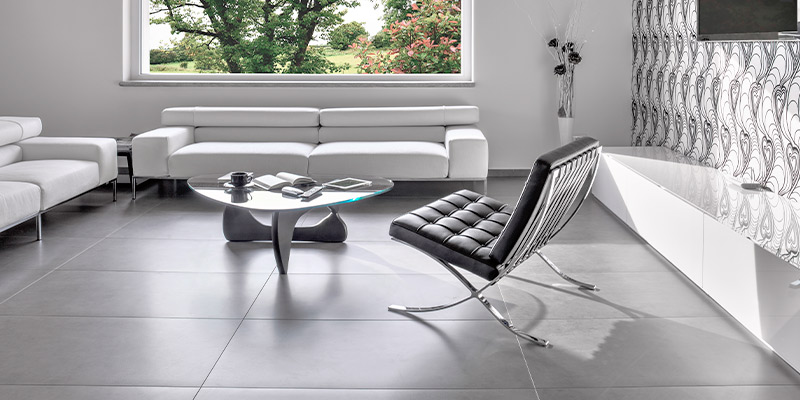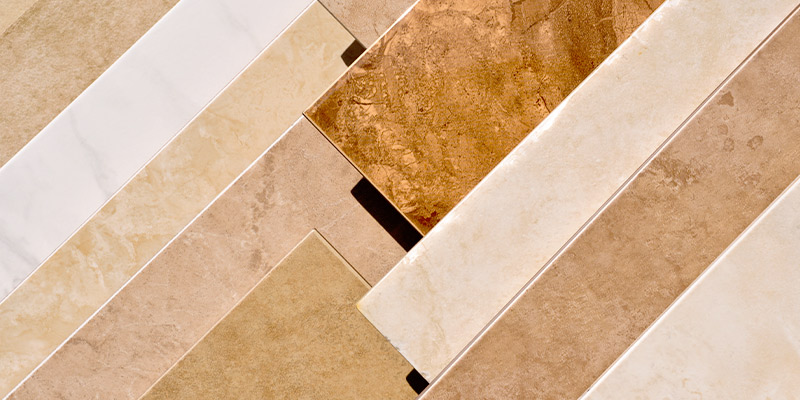When bidding a job, the installer should consider the following:
Type of application. Is the wall or floor an interior or exterior application? Is it expected to be wet (e.g. a shower or steam room) or relatively dry (e.g. a conference room)? Is it a commercial building or a residence?
Potential use. Will the flooring installation be subject to heavy commercial traffic? Will the stone tile wall be subject to freezing and thawing?
Substrate. Can the intended substrate support the weight of the tile with an acceptable amount of deflection? Is the substrate flat?
Type of stone. Is the specified stone highly porous, such as limestone, or less water absorptive, such as granite? Highly porous stone, especially, will require a sealer to protect the beauty of the installation.
Installation materials. Will the selected materials meet or exceed the requirements of the installation method and not negatively affect productivity?
Flooring installation challenges
Large-format tile presents several challenges when used in floor installations. Some of the common concerns are:
Tile weight is the primary challenge. Heavy stone floor tile that settles into the mortar bed can cause ‘lippage’ – a condition where one edge of a tile is higher than adjacent edges. The result is a finished surface that has an uneven appearance. In a worst case, it is an uneven floor that causes a tripping hazard.
A substrate that isn’t perfectly flat to begin with will exacerbate an uneven floor problem as the tile is installed.
Ensuring a flat substrate
Use of a self-leveling underlayment is the most efficient way to attain a uniformly flat substrate, particularly over a large area such as an entire room. These products are cement-based and may be poured or pumped onto the affected area. Smaller substrate corrections (generally up to 1â„2 inch) may be made with latex-modified floor patch products. To ensure compatibility, the industry recommends that substrate preparation products come from the same manufacturer as the rest of the installation system.
A 6-foot level or a 10-foot straight edge will help measure possible variation in the substrate, and these tools are also useful in making sure that installed tile is flat.
Toward better bonding
To achieve an adequate bond for large-format natural stone floor tile, the bonding material must evenly and thoroughly cover the area beneath the tile. Use of a large trowel (1/2- x- 1/2-inch square notch or 3/4- x- 3/4-inch rounded notch) will help ensure that the mortar adequately covers the substrate.
A long-standing installation practice is to back-butter each piece of tile. While effective at attaining 100% coverage, it is time consuming and requires extra mortar.
Although back-buttering is still widely accepted, the formulation of the new performance mortars makes it possible to achieve excellent coverage without applying additional material. Some of these new mortars are formulated with very fine particles – or nanostructures – that line up like interlocking puzzle pieces in the wet cement in the mortar to achieve high cohesive strength. Additionally, the ceramic microspheres interact with the cement, resulting in stronger bonds.
Moisture sensitivities
Some stone types, such as green marble, white onyx and jade, are sensitive to moisture and require special installation consideration. The water mixed with the mortar may cause unsightly staining – or worse, warping of the tile. Therefore, a pure epoxy thinset mortar is recommended for these types of stone. In addition, white thinset mortar is always recommended for use with any translucent stone, such as marble.









Leave a Reply